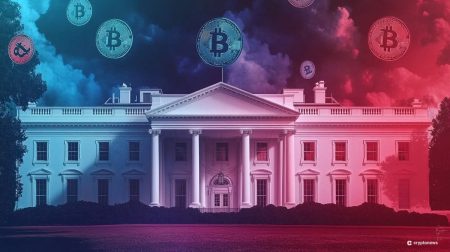According to Grayscale, recent inflation figures have shown a short-term negative impact on cryptocurrency, but continuous inflation may ultimately increase sentiment towards digital assets. Inflation refers to the prolonged increase in the general price level of goods and services in an economy, resulting in a decline in the purchasing power of fiat currency. In March, the Consumer Price Index (CPI) statistics exceeded expectations with inflation growing by 0.4% month-on-month and 3.5% year-on-year, influenced by increases in the cost of shelter and fuel. Interest rate increases are used as a tool to reduce inflation by slowing economic activity, lowering consumer spending and business investment, strengthening the currency, and altering expectations about future inflation.
The unexpected increase in inflation has lowered the confidence in the possibility of the Federal Reserve lowering interest rates in the coming months. Market analysts expect the US Federal Reserve to hold interest rates constant for May and June, with the first likely rate cut coming in September. This has resulted in a slowed economy, less volume flowing into assets like Bitcoin, and investors decreasing their position. Bitcoin’s price fell by 2.5% on April 10th in response to the unexpected CPI figures, although it corrected later that day. In the past, the 10-year real interest rate spike correlated with a dramatic fall in Bitcoin’s price.
Grayscale’s managing director of research, Zach Pandl, argued that the current negative market sentiment due to rising inflation is a “short-term negative for crypto,” with high inflation indicating that the Federal Reserve is unlikely to cut rates soon. Pandl cited events like the Bitcoin halving, rising economic growth, and growing crypto adoption as factors that will drive Bitcoin’s price in the long term. He believes that as inflation rates continue to rise, store-of-value assets like Bitcoin will be in high demand and sees cryptocurrency benefiting from increased interest rates. However, Bitcoin’s high volatility makes it an unpredictable investment, leading some investors to opt for less volatile assets like conventional bonds and term deposits.
From December 2017 to January 2018, the 10-year real interest rate spiked, leading to a 28% decline in Bitcoin’s price. Grayscale’s Zach Pandl believes that events like the Bitcoin halving and increasing crypto adoption will create a supportive environment for crypto markets. He predicts that as inflation rates rise and fiat currency continues to devalue, store-of-value assets like Bitcoin will become increasingly attractive. However, despite Bitcoin’s success as a long-term store of value since its launch in 2010, its high volatility remains a concern, leading some investors to choose less risky investment options.
The unexpected increase in inflation has led to a decrease in confidence regarding the Federal Reserve’s potential interest rate cuts. Traders estimate a low probability of a rate decrease in June, with the first likely cut coming in September. This prolonged slowed economy has resulted in less volume flowing into assets like Bitcoin and investors reducing their positions. Bitcoin’s price response to the unexpected CPI figures reflects the impact of inflation on the cryptocurrency market, although it later corrected. Bitcoin’s history of price declines in correlation with real interest rate spikes highlights the volatility of the digital asset market, emphasizing the importance of diversification and risk management for investors.
Grayscale’s Zach Pandl believes that rising inflation is a short-term negative for cryptocurrency but could ultimately lead to increased interest in digital assets. He sees events like the Bitcoin halving, rising economic growth, and growing adoption as drivers of Bitcoin’s price in the long term. Pandl predicts that as inflation rates continue to rise and fiat currency devalues, store-of-value assets like Bitcoin will become more attractive. However, the unpredictable nature of Bitcoin’s volatility may lead some investors to opt for less risky investment options such as conventional bonds and term deposits. Despite the challenges posed by inflation, Pandl remains optimistic about the long-term potential of cryptocurrency and its ability to thrive in an inflationary environment.













